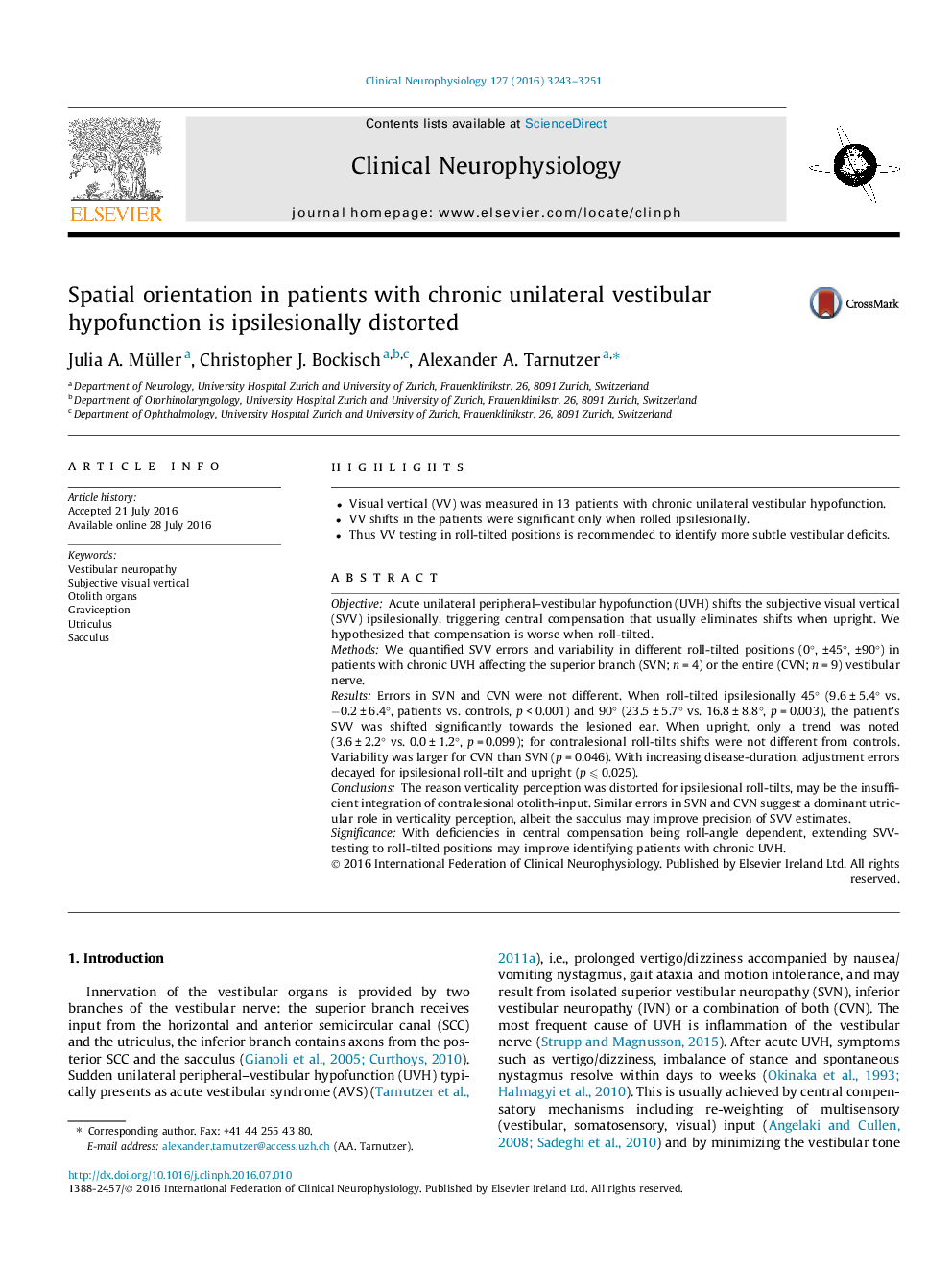| Article ID | Journal | Published Year | Pages | File Type |
|---|---|---|---|---|
| 5627877 | Clinical Neurophysiology | 2016 | 9 Pages |
â¢Visual vertical (VV) was measured in 13 patients with chronic unilateral vestibular hypofunction.â¢VV shifts in the patients were significant only when rolled ipsilesionally.â¢Thus VV testing in roll-tilted positions is recommended to identify more subtle vestibular deficits.
ObjectiveAcute unilateral peripheral-vestibular hypofunction (UVH) shifts the subjective visual vertical (SVV) ipsilesionally, triggering central compensation that usually eliminates shifts when upright. We hypothesized that compensation is worse when roll-tilted.MethodsWe quantified SVV errors and variability in different roll-tilted positions (0°, ±45°, ±90°) in patients with chronic UVH affecting the superior branch (SVN; n = 4) or the entire (CVN; n = 9) vestibular nerve.ResultsErrors in SVN and CVN were not different. When roll-tilted ipsilesionally 45° (9.6 ± 5.4° vs. â0.2 ± 6.4°, patients vs. controls, p < 0.001) and 90° (23.5 ± 5.7° vs. 16.8 ± 8.8°, p = 0.003), the patient's SVV was shifted significantly towards the lesioned ear. When upright, only a trend was noted (3.6 ± 2.2° vs. 0.0 ± 1.2°, p = 0.099); for contralesional roll-tilts shifts were not different from controls. Variability was larger for CVN than SVN (p = 0.046). With increasing disease-duration, adjustment errors decayed for ipsilesional roll-tilt and upright (p ⩽ 0.025).ConclusionsThe reason verticality perception was distorted for ipsilesional roll-tilts, may be the insufficient integration of contralesional otolith-input. Similar errors in SVN and CVN suggest a dominant utricular role in verticality perception, albeit the sacculus may improve precision of SVV estimates.SignificanceWith deficiencies in central compensation being roll-angle dependent, extending SVV-testing to roll-tilted positions may improve identifying patients with chronic UVH.
